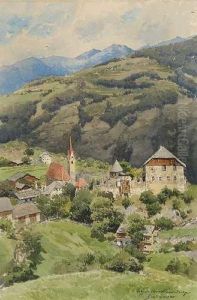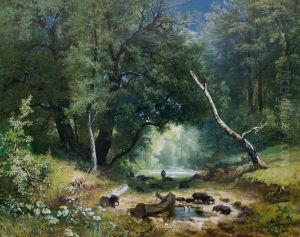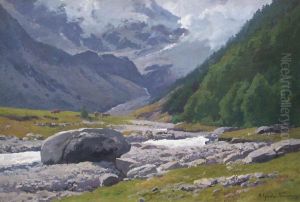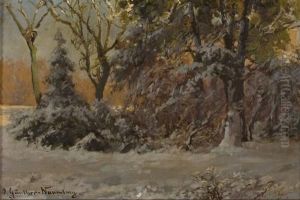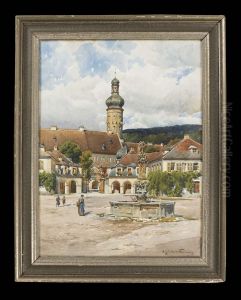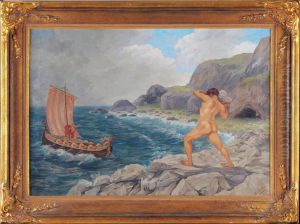Otto Gunther-Naumburg Paintings
Otto Günther-Naumburg was a German painter and architect born in 1866, at a time when Germany was still a collection of principalities before its unification. He is not as widely known as some of his contemporaries in the art world, and as such, detailed information about his life and works is more obscure and less documented than for more famous artists.
Günther-Naumburg's career spanned a period of significant change in German history, including the rise of the German Empire, the Weimar Republic, and the early years of Nazi Germany. His work, therefore, reflects a range of influences and styles that were prominent in Germany and elsewhere in Europe during the late 19th and early 20th centuries.
As a painter, Günther-Naumburg would have been involved in the various artistic movements of his time. However, his architectural endeavors are what he may be more recognized for. Architecture during his lifetime saw a dramatic shift from the ornate styles of the 19th century to the more stripped-down, functionalist design of the early 20th century, which was later known as the International Style. Given the lack of extensive records on Günther-Naumburg, it is difficult to pin down his exact contributions to these movements.
Günther-Naumburg's life came to an end in 1941, in the midst of World War II, a period when Germany was under the control of the Nazi regime. It is unclear how the political climate of the time influenced his work or his legacy. With the destruction and upheaval caused by the war, many works of art and historical records were lost, which may contribute to the scarcity of information about lesser-known artists like Günther-Naumburg.
Due to this lack of information, Günther-Naumburg's life and work are not as well-studied or celebrated as those of his peers. Nevertheless, he remains a figure of interest for specialists studying the specific period of art and architecture to which he contributed. Any further research would likely delve into more detailed archives in Germany or examine the context of his work within the broader trends of the era.
